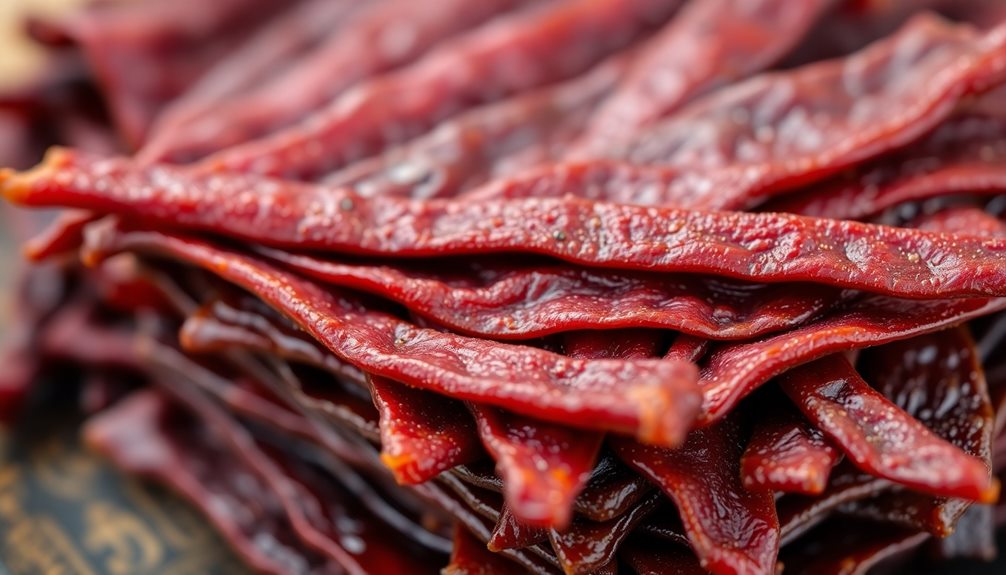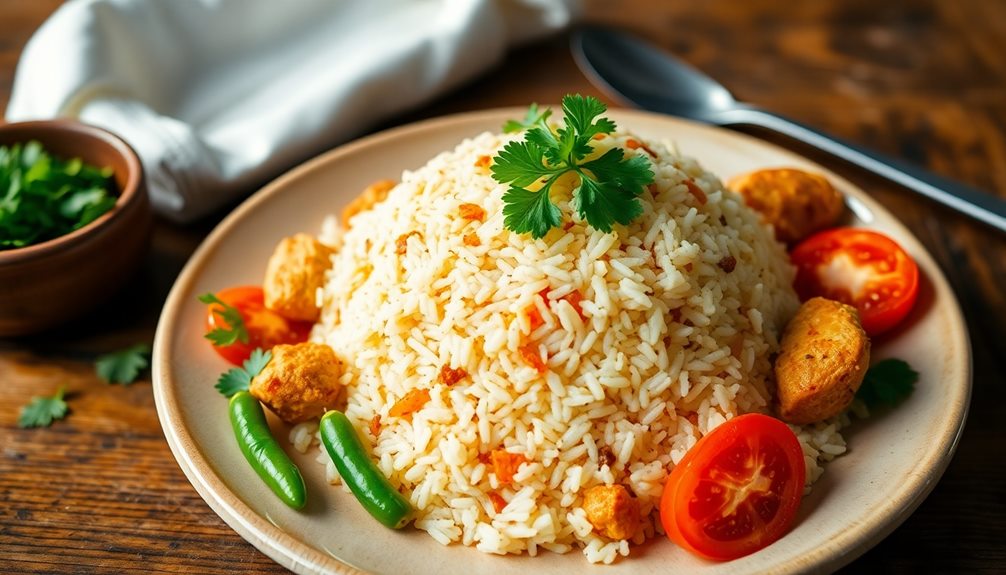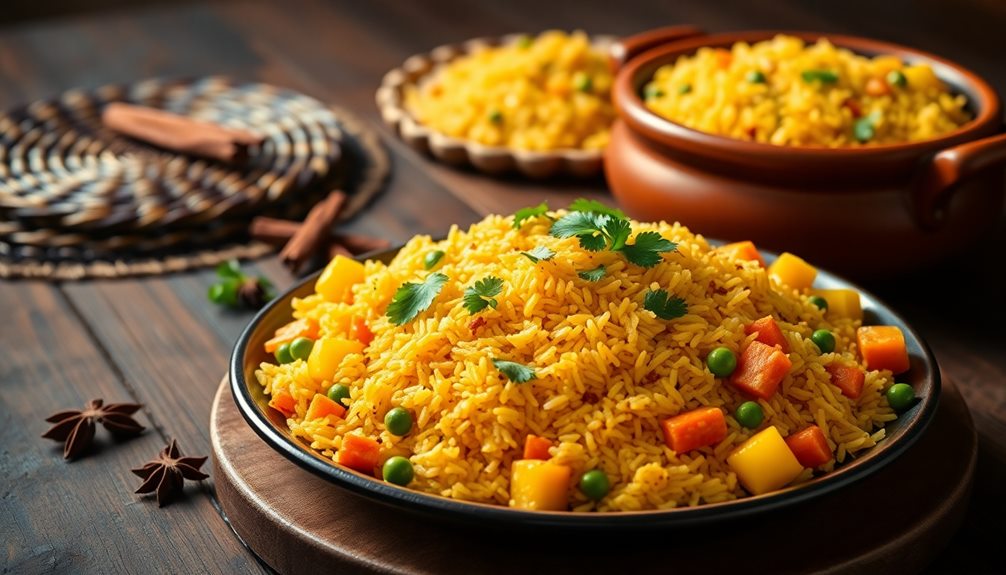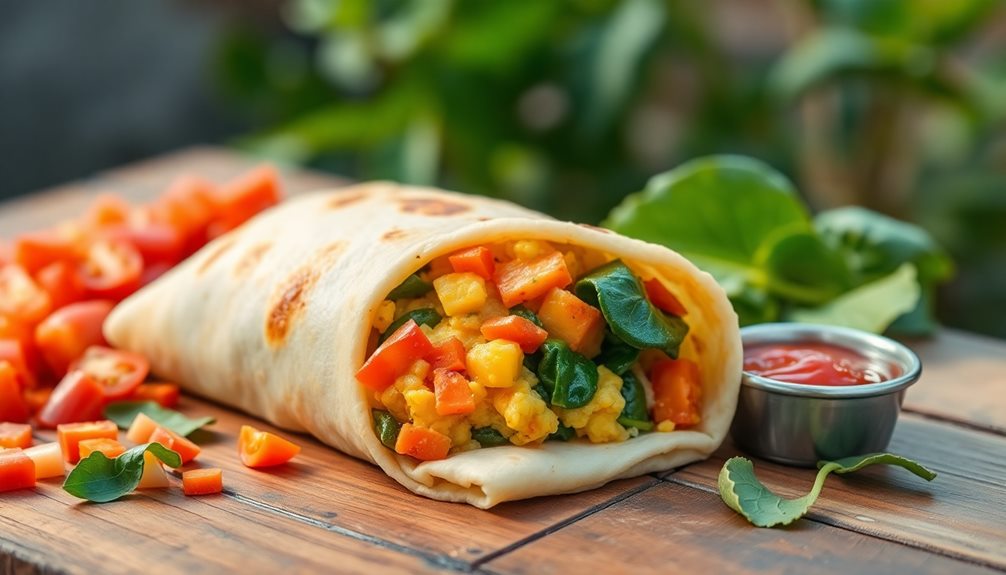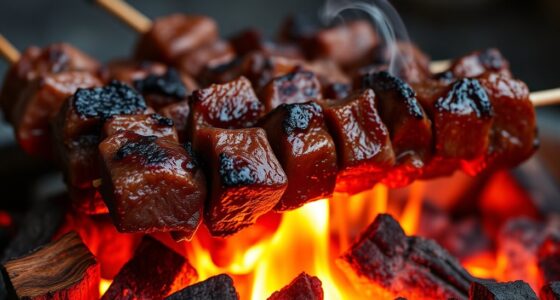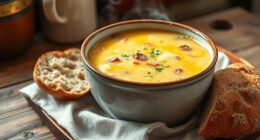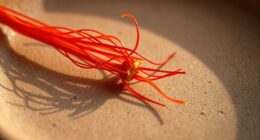Get ready to embark on a flavorful and fragrant journey with the ultimate pilau recipe! This beloved rice dish hails from the Middle East and Africa, and each culture has put its own unique spin on it over time. Dive into the aromas of toasted spices, caramelized onions, and fragrant herbs as you craft this satisfying meal. The key is balancing the flavors just right – soaking the rice to achieve the perfect texture, then simmering it to perfection in a broth brimming with spices. Garnish with fresh herbs or crunchy toppings, and get ready to transport your taste buds to distant lands. There's more to discover about the rich history and cultural significance of this cherished dish.
Key Takeaways
- Pilau is a beloved rice dish with ancient origins in the Middle East and Africa, featuring unique spices and flavors across cultures.
- The key to a successful pilau is balancing spices and cooking the rice to perfection, with soaking the rice being a crucial step.
- The cooking process involves toasting whole spices, sautéing onions, and simmering the rice in broth to create a fragrant, flavorful dish.
- Pilau can be garnished with fresh herbs or fried onions for added texture and aroma, enhancing the overall dining experience.
- Mastering the art of pilau cooking showcases culinary prowess and can foster social engagement, as the dish is often shared during celebrations and gatherings.
History
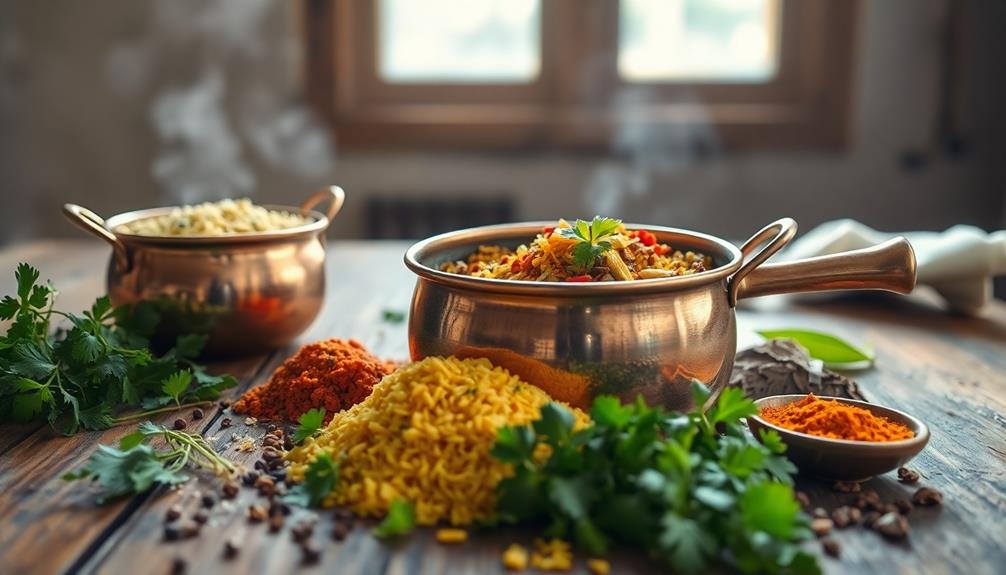
Pilau, a beloved rice dish, has long been a staple in many regions across the globe. Its origins can be traced back to ancient times, with the earliest known recipes dating back to the Middle East and Africa.
Over the centuries, pilau has evolved, with different cultures adding their own unique twists and flavors to the dish. In India, for instance, pilau is often made with fragrant spices like cumin, cinnamon, and cardamom, creating a rich and aromatic dish. In the Middle East, pilau takes on a distinct character with the inclusion of dried fruits like raisins and apricots, balancing savory and sweet flavors. Similarly, Central Asian versions often feature tender chunks of lamb or beef, reflecting the region’s culinary traditions. Just as the history of tea varieties illustrates the diversity of cultures and their adaptations, pilau stands as a testament to how food evolves through shared traditions and regional influences.
Meanwhile, in East Africa, pilau may feature coconut milk and various meats, reflecting the local culinary influences. Regardless of the specific recipe, pilau has always been a beloved part of celebrations and gatherings, bringing families and communities together through the sharing of a delicious meal.
Today, pilau continues to be enjoyed around the world, with home cooks and chefs alike experimenting with new ingredients and techniques to put their own spin on this timeless dish.
Recipe
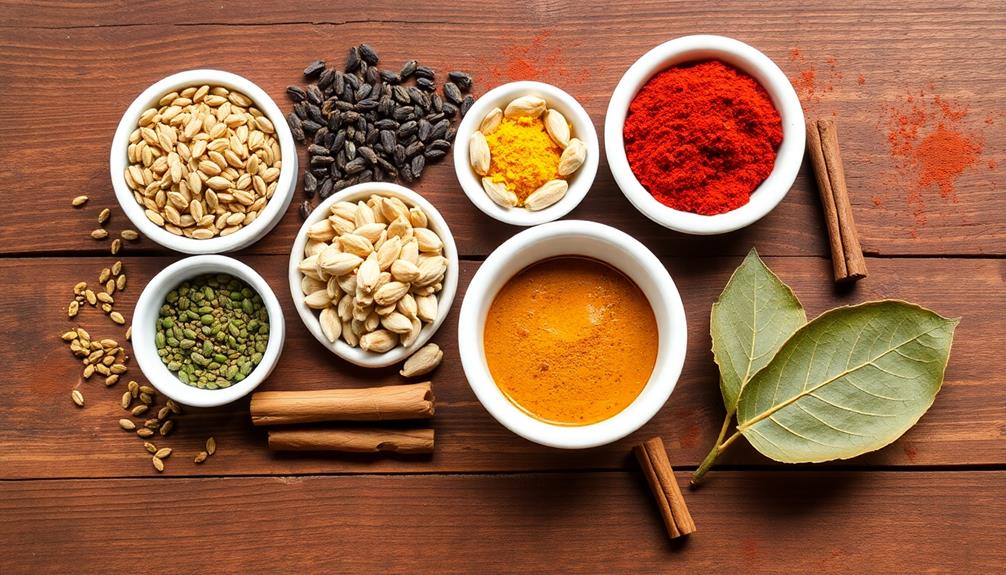
Pilau is a fragrant and flavorful rice dish that originates from East Africa. It's a staple in many households and a beloved comfort food. The blend of spices, herbs, and aromatic vegetables creates a truly delightful and satisfying meal.
Preparing the perfect pilau requires a bit of care and attention, but the end result is well worth the effort. The key is to balance the spices, cook the rice to perfection, and let the flavors meld together seamlessly.
Ingredients:
- 2 cups basmati rice
- 1 onion, diced
- 3 cloves garlic, minced
- 1 inch ginger, grated
- 2 tablespoons oil
- 1 teaspoon cumin seeds
- 1 teaspoon coriander seeds
- 2 cardamom pods
- 1 cinnamon stick
- 2 cloves
- 1 bay leaf
- 1 teaspoon turmeric
- 1 teaspoon paprika
- 1 teaspoon garam masala
- 1 teaspoon salt
- 3 cups chicken or vegetable broth
In a large pot, heat the oil over medium heat. Add the cumin seeds, coriander seeds, cardamom pods, cinnamon stick, cloves, and bay leaf. Toast the spices for 2-3 minutes, until fragrant.
Add the onion, garlic, and ginger, and sauté for 5 minutes until the onion is translucent.
Stir in the turmeric, paprika, and garam masala, and cook for 1 minute. Add the rice and stir to coat it with the spices. Pour in the broth, cover the pot, and bring the mixture to a boil.
Once boiling, reduce the heat to low, cover, and simmer for 20-25 minutes, or until the rice is tender and the liquid is absorbed.
Remember to let the pilau rest for 5-10 minutes before fluffing it with a fork. This allows the flavors to fully develop.
Serve the pilau warm, garnished with fresh herbs or a sprinkle of fried onions for an extra crunch. Enjoy your authentic and delicious pilau!
Cooking Steps
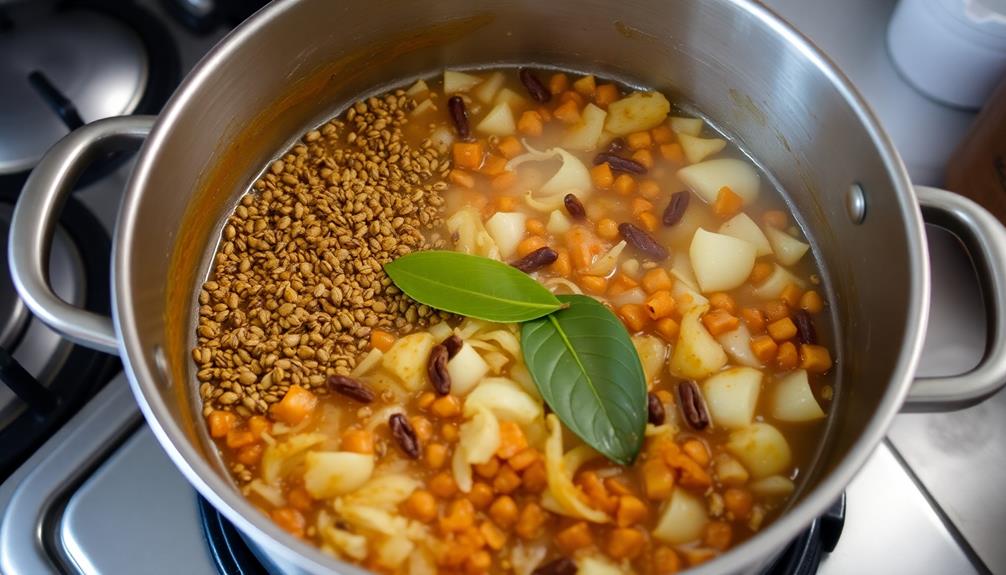
First, you'll need to soak the rice in water overnight to get it nice and fluffy. This step is essential for achieving the best texture, much like how heat pumps can reduce energy consumption significantly for greater efficiency.
Drain and rinse the soaked rice to remove any excess starch. Next, heat up some oil in a pot and add your favorite spices and onions – this'll give your pilau a delicious aroma.
Step 1. Soak Rice in Water Overnight
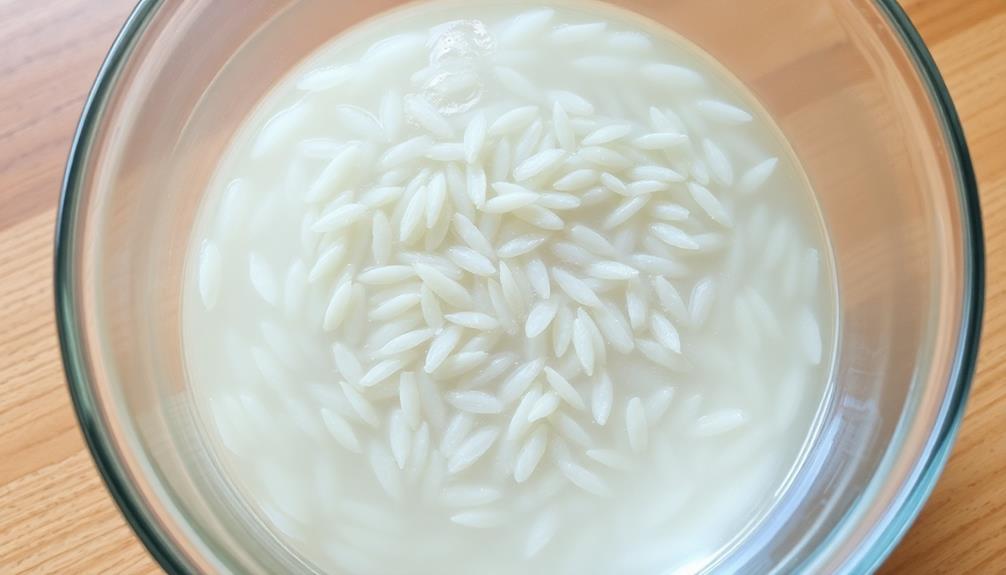
Soaking the rice overnight is a crucial step in preparing a delicious pilau. This simple process helps to ensure the grains cook evenly and develop a wonderfully tender texture.
Start by measuring out the rice you'll need – you'll want to use about 1 cup per person. Rinse the rice under cool, running water until the water runs clear. Then, transfer the rice to a large bowl and cover it with fresh water.
Let it soak for at least 6-8 hours, or overnight. This allows the rice to absorb moisture, which helps it cook up light and fluffy. In the morning, simply drain the rice and it's ready to go!
Soaking the rice is an easy way to get a head start on your pilau prep. With this simple step out of the way, you'll be one step closer to enjoying a fragrant, flavorful, and authentic pilau dish.
Get ready for the deliciousness to come!
Step 2. Drain and Rinse the Soaked Rice
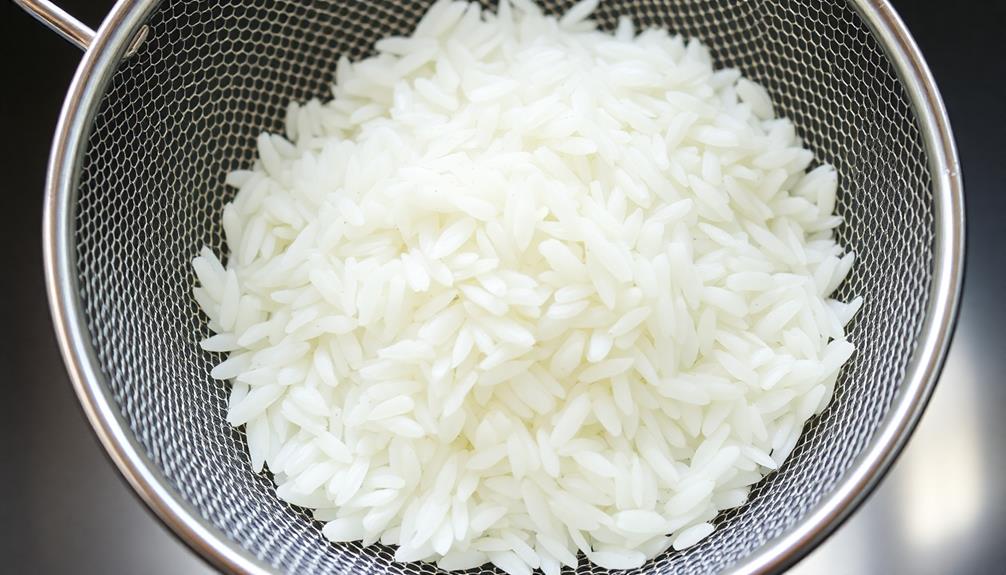
Having soaked the rice overnight, you'll now want to drain and rinse it before proceeding with the cooking steps. This is an important step that helps remove any excess starch and ensures your pilau turns out perfectly fluffy and separated.
First, grab a fine-mesh strainer and place the soaked rice inside. Gently shake the strainer to allow the water to drain off.
Once the rice is mostly drained, run some fresh, cool water over it, giving it a gentle swish to rinse away any remaining starch.
Drain the rice thoroughly again, making sure to get rid of all the excess water. This step is crucial, as any leftover moisture can affect the cooking process and lead to a gloopy, sticky pilau.
With the rice nicely drained and rinsed, you're ready to move on to the next exciting stage of this delicious recipe!
Step 3. Heat Oil in a Pot

With the rice now drained and rinsed, it's time to start cooking! Grab your trusty pot and let's get sizzling. Pour in a generous amount of oil – just enough to coat the bottom of the pot. Turn the heat to medium-high, and wait patiently for the oil to heat up. You'll know it's ready when it starts to shimmer and dance in the pot.
Now, carefully add your whole spices – the fragrant cardamom pods, cinnamon sticks, and cloves. Let them sizzle and release their aroma, filling your kitchen with the promise of deliciousness. Stir them around to ensure they toast evenly, about 1-2 minutes. Be careful not to let them burn, as that can make the flavors bitter.
Once the spices are toasted and aromatic, it's time to add the onions. Toss them in and let them cook until they're soft and golden brown, around 5-7 minutes. Stir occasionally to prevent burning.
With this flavorful foundation laid, you're ready to move on to the next step!
Step 4. Add Spices and Onions
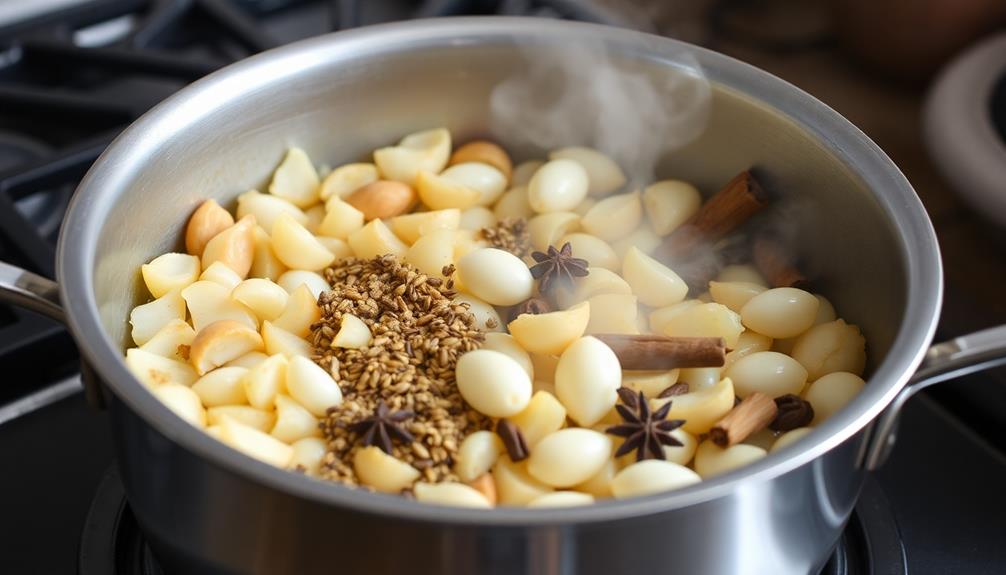
Now that the rice is drained and rinsed, you'll want to start cooking. Grab your pot and heat a splash of oil over medium heat. Once the oil is shimmering, it's time to add the spices! Throw in some fragrant whole cloves, cardamom pods, and cinnamon sticks. Their aroma will fill the kitchen and make your mouth water.
To enhance the sensory experience, consider using essential oils in your cooking space, as they can elevate the overall atmosphere and provide calming effects while you prepare your meal. Aromatherapy techniques for relaxation can truly transform your cooking environment.
Next, toss in some sliced onions. Let them sizzle and soften, stirring occasionally, until they turn a lovely golden brown. The onions will add sweetness and depth to your pilau. As they cook, the spices will release their flavors, creating an incredible scent that'll have everyone gathering around the table.
Once the onions are caramelized and the spices are toasted, you're ready for the next step. Get ready to add the remaining ingredients and let the pilau simmer to perfection. Your kitchen is about to be filled with the most mouthwatering aromas!
Step 5. Add Rice and Cook
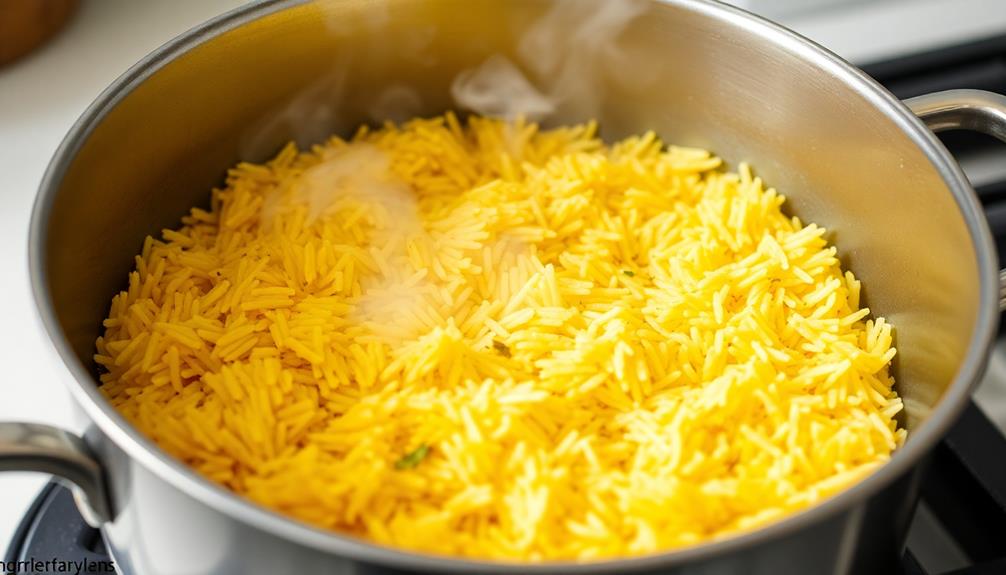
Once the onions are caramelized and the spices are toasted, add the drained and rinsed rice to the pot. Gently stir the rice into the fragrant mixture, ensuring every grain is coated in the aromatic oil.
Now, pour in the hot broth, taking care not to splash. Bring the pot to a boil, then reduce the heat to low, cover, and let the rice simmer.
Set a timer and let the pilau work its magic! While the rice cooks, the flavors will meld together, creating a delightful harmony.
After 15-20 minutes, check the rice. It should be tender and fluffy. If there's still liquid, let it cook a bit longer.
Once the rice is perfect, fluff it with a fork and serve hot, garnished with fresh herbs or a sprinkling of toasted nuts. Get ready for your taste buds to take a delicious journey with every bite of this ultimate pilau!
Final Thoughts
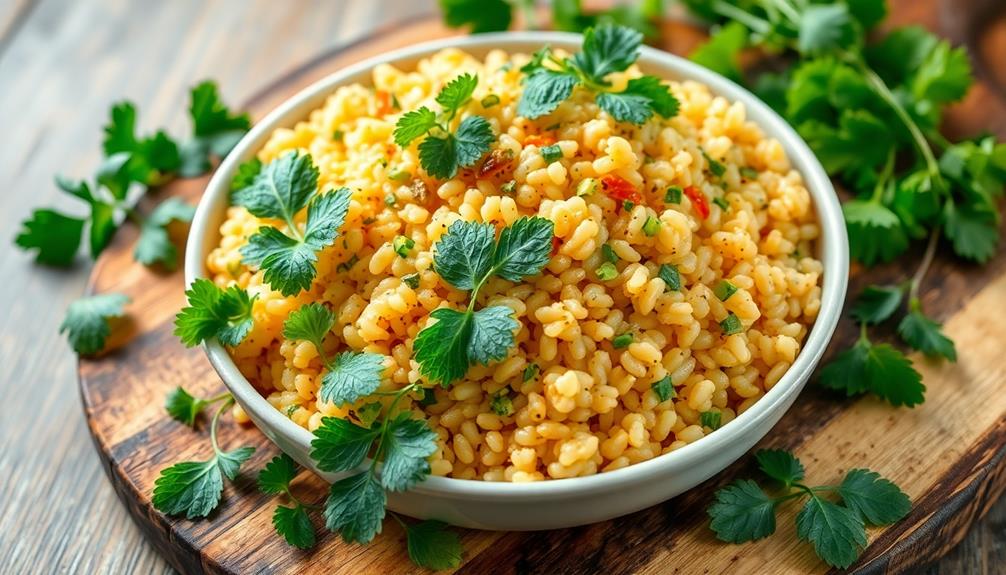
As you've now mastered the art of preparing the perfect pilau, it's time to reflect on the journey. The captivating aroma, the vibrant colors, and the mouthwatering flavors you've created are a true testament to your culinary prowess.
Just like the intricate processes involved in the refrigeration cycle, creating this dish requires attention to detail and a careful balance of ingredients. Gather your loved ones around the table, and savor each bite as you bask in the glory of your accomplishment.
This pilau is more than just a dish – it's a celebration of culture, tradition, and the power of home-cooked meals. With each fragrant spoonful, you'll transport your taste buds to faraway lands, while creating cherished memories with your family.
Maintaining efficiency in your cooking, just as in heat pumps, can elevate your culinary creations to new heights.
Don't be surprised if your pilau becomes the talk of the town! Neighbors and friends will be clamoring for the secret to your success.
Frequently Asked Questions
How Long Does Pilau Rice Keep After Cooking?
Cooked pilau rice can typically be stored in the refrigerator for 3-4 days. To extend its shelf life, you'll want to store it in an airtight container. With proper storage, you can enjoy the flavorful pilau for several days after cooking.
Can I Use Different Types of Meat in Pilau?
You can definitely use different types of meat in pilau. Chicken, beef, lamb, or even a mix of meats can work well. Just be sure to adjust the cooking time accordingly for the type of meat you choose.
Is Pilau Rice Gluten-Free?
Yes, pilau rice is typically gluten-free since it's made from rice. The rice used in pilau doesn't contain any wheat or other gluten-containing grains. You can enjoy pilau as a delicious, gluten-free option.
Can I Make Pilau Rice in a Slow Cooker?
You can absolutely make pilau rice in a slow cooker! The slow cooking process allows the flavors to meld together perfectly, resulting in a fragrant and delicious pilau that's easy to prepare. Give it a try for hassle-free pilau perfection.
How Do I Reheat Leftover Pilau Rice?
To reheat leftover pilau rice, place it in a microwave-safe dish and add a few tablespoons of water. Cover with a damp paper towel and microwave in 30-second intervals, stirring between, until heated through. Fluff with a fork before serving.

